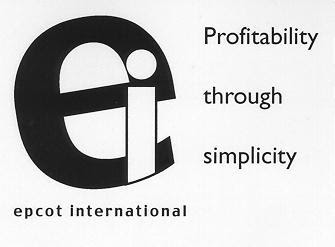Reading two recent articles in Organic Process Research
& Development magazine (1,2) had
me wondering about my chemistry and chemical engineering education and
practices. They created a doubt in my mind and raised a question “would the
fundamentals that we had learnt and are the building blocks of the chemical
industry where chemicals are either reacted or blended to produce useful
products not work anymore?”
These articles also eluded that the pharmaceutical
manufacturing is different and cut above the chemical industry. A new
terminology rather than the fundamentals of chemical engineering and chemistry
(simple heat/energy and mass balance, improving process productivity and having
an economic process) are more important and necessary to design and create an
economic and sustainable process. If that is the case then things have changed
dramatically and many others and I could be oblivious to the change. The new
terms are process mass intensity (PMI), reaction mass efficiency, E factor,
Eutrophication Potential, atom economy and space-time yield etc.
During my undergraduate degree in chemical engineering, we
were taught the fundamentals of heat/energy and mass balance, organic, physical
and inorganic chemistry along with unit operations and unit processes,
thermodynamics, chemical reaction kinetics and economics to develop processes
that when commercialized using properly designed and appropriate equipment produced
quality product, had minimal impact on environment and were economical. As the
time progressed environmental laws encouraged us to improve processes to
minimize the ecological impact.
Based on end application of the products, the
manufacturing processes were labeled differently e.g. products covering
surfaces were called coatings, chemicals that have disease curing value were
called pharmaceuticals, chemicals that did not have disease curing value but
were used as additives were classified as fine/specialty chemicals and products
from crude oil were categorized as petrochemicals and so on. However, the
fundamentals that were/are applied for the process design and development have
not changed much.
I am not sure how many practicing chemical engineers or
chemists understand what the new terminology discussed above means or are they
just fancy expressions for the fundamentals that many will not understand. Due
to diverse chemistries and processes of active pharmaceutical ingredients and
formulations being produced in existing equipment that is not designed and/or
optimized for their production, I am not sure if these factors truly on their
own can deliver a green process.
There are ninety-nine references in these articles. One is
from 1994 and two are from 1999. Does the lack of prior references suggest that
the chemists and chemical engineers before 1990 were totally naïve and
oblivious to good process development, design and engineering practices and did
not use the fundamentals to develop, design and commercialize sustainable
chemical processes? Or is there a latent message that the pharmaceutical
development and manufacturing is elite, complex and chemistry and chemical
engineering principles apply differently to them or some other principles
apply?
I hope that is not the case. If it is, then it is suggests
that the manufacturing will have occasional problems. This will be manifested
by our lack of command of the processing steps forcing us to rely on QbA
(Quality by Analysis) methods to ensure quality of active pharmaceutical
ingredients and their formulations. Occasional recalls and increasing citations
are suggestive of our lack of command and control of the manufacturing
practices.
To have robust, economic and sustainable processes I
strongly believe that we need to have understanding and command of the
processes. That can only happen by application of fundamentals that we learn in
our chemistry and chemical engineering curricula along with our creativity and
imagination (3,4).
The products produced using such processes will produce the desired quality
products. Quality by Design (QbD) will prevail and the environmental impact
will be minimized.
Girish Malhotra, PE
EPCOT International
- Jimenez-Gonzales, C. etal, Using the Right Green Yardstick: Why Process Mass Intensity is Used in the Pharmaceutical Industry to Drive More Sustainable Processes, Organic Process Research and Development, Org. Process Res. Dev., 2011, 15, pgs. 912–917
- Jimenez-Gonzales, C. etal, Key Green Engineering Research Areas for Sustainable Manufacturing: A Perspective from Pharmaceutical and Fine Chemicals Manufacturers, Org. Process Res. Dev., 2011, 15, pgs. 900–911
- Malhotra, Girish: Chemical Process Simplification: Improving Productivity and Sustainability, February 2011, John Wiley & Sons Inc.
- Malhotra, Girish: Focus on Physical Properties To Improve Processes, Chemical Engineering, Vol. 119, No. 4, April 2012, pgs. 63-66
